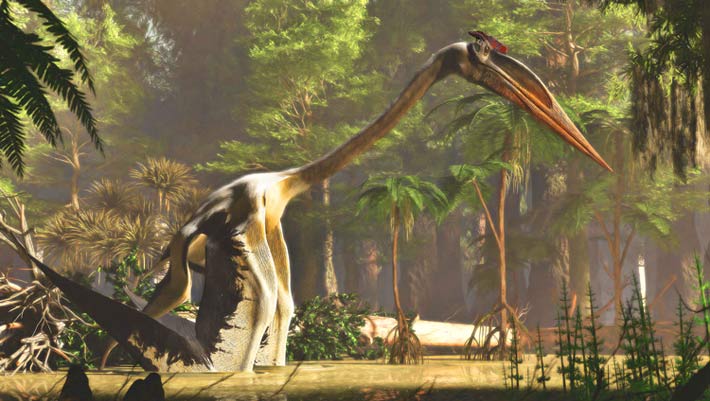Now Reading: Warm, Humid Climate Enabled Pterosaurs to Soar 220 Million Years Ago
-
01
Warm, Humid Climate Enabled Pterosaurs to Soar 220 Million Years Ago
Warm, Humid Climate Enabled Pterosaurs to Soar 220 Million Years Ago

Quick Summary:
- Paleontologists combined fossil distribution data of pterosauromorphs (pterosaurs + lagerpetids) wiht ancient climate facts.
- Lagerpetids, small land/tree-dwelling reptiles from 240-201 million years ago, tolerated diverse climate conditions and had widespread distribution in Pangea.
- Pterosaurs initially thrived only in humid tropical regions near the equator (modern-day Italy, Austria, southwestern United States).
- Global climatic shifts during the Late Triassic led to increased warm and humid conditions outside equatorial zones, enabling pterosaurs to spread globally.
- The study suggests changing climates and ecological opportunities drove early evolution and dominance of pterosaurs as a flying reptile group.
- Researchers highlight how paleoclimate modeling is helping understand biodiversity shifts caused by historic climate changes.
[Image included: An artistic depiction of Quetzalcoatlus northropi by james Kuether.]
Indian Opinion Analysis:
This research highlights the notable role climatic changes play in driving evolutionary milestones. For India, such findings underscore both global interconnectivity during Earth’s formative periods and the importance of studying paleoclimate’s influence on biodiversity. It draws parallels with current concerns about modern climate change impacting ecosystems-a timely reminder for policymakers to balance ecological conservation amid developmental ambitions. Furthermore, fostering cross-disciplinary research like this could strengthen India’s scientific position in exploring ancient life forms or contributing to international collaborations on evolutionary studies.























